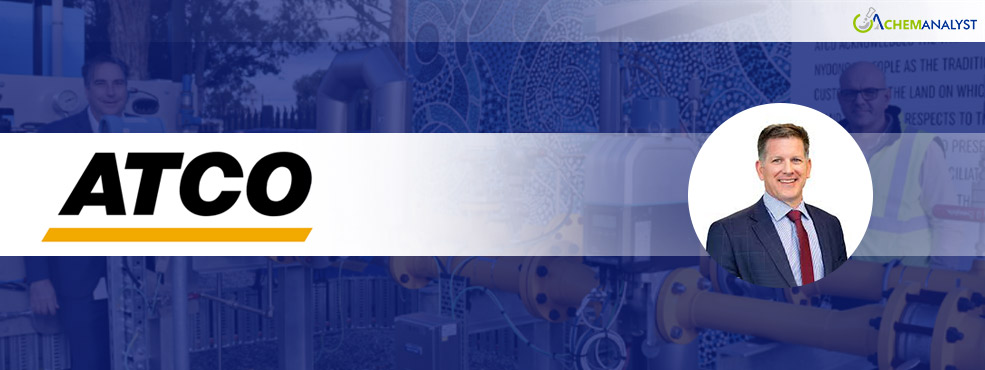Australian gas utility reaches milestone with 10% renewable hydrogen blend
- 11-Oct-2024 1:00 AM
- Journalist: Jung Hoon
Western Australian gas utility ATCO Australia has made significant strides in sustainable energy by achieving a test network distribution blend of up to 10% renewable hydrogen for 3,000 homes. This accomplishment is part of the Hydrogen Community Blending Project (HCBP), which represents an AUD 2.6 million ($1.7 million) initiative focused on integrating renewable energy into the gas supply.
The HCBP builds on successful blending tests conducted at the Clean Energy Innovation Hub (CEIH) at ATCO's Jandakot operations centre. This project leverages a combination of solar energy, battery storage, and renewable hydrogen generated through electrolysis, allowing ATCO to provide a cleaner energy alternative to its customers. By using a solar-powered electrolyser, the company produces hydrogen from renewable sources, further enhancing the sustainability of its energy mix.
The introduction of renewable hydrogen into the gas network not only aims to reduce carbon emissions but also serves as a pivotal step toward transitioning to a more sustainable energy future. ATCO’s efforts in the Hydrogen Community Blending Project highlight its commitment to innovation and leadership in the renewable energy sector, setting a benchmark for other utilities in the region. As the project progresses, ATCO aims to demonstrate the viability of blending renewable hydrogen with natural gas, potentially paving the way for larger-scale adoption of green hydrogen solutions in Western Australia and beyond.
The Clean Energy Innovation Hub (CEIH) launched its Hydrogen Microgrid in 2019, receiving partial funding of AUD 1.79 million from the Australian Renewable Energy Agency (ARENA). This innovative microgrid incorporates 1,003 solar panels, harnessing excess renewable energy generated by a 300-kW rooftop solar system. This surplus energy is utilized to produce hydrogen through a 260-kW proton exchange membrane (PEM) electrolyser.
The Hydrogen Microgrid is a crucial component of ATCO’s broader strategy to integrate renewable energy solutions into its operations. By converting solar energy into hydrogen, the facility not only contributes to the sustainability of ATCO's energy supply but also supports the company’s goals of reducing carbon emissions and promoting cleaner energy alternatives. The successful implementation of this technology exemplifies the potential for renewable hydrogen to play a significant role in the future of energy distribution, paving the way for similar initiatives in other regions.
Excess energy generated from the solar panels is stored in a 478-kWh battery energy storage system (BESS), ensuring that any unused power can be effectively harnessed when needed. This capability allows ATCO to manage energy demand more efficiently and provide a reliable supply of electricity, even during periods of low solar generation.
In addition to battery storage, pure green hydrogen is stored in a high-pressure vessel rated at 30 bars. This hydrogen can be utilized in several ways: it can be blended with natural gas for distribution through the gas network, used directly for testing appliances that run on hydrogen, or serve as backup power for a display home. This versatility showcases the potential of hydrogen as a flexible energy source, capable of supporting various applications and enhancing the overall resilience of the energy system.
The integration of both battery and hydrogen storage systems exemplifies ATCO's innovative approach to energy management, allowing for effective utilization of renewable resources. By optimizing energy storage and blending capabilities, the Hydrogen Microgrid not only contributes to the company's sustainability goals but also demonstrates a scalable model for other utilities looking to incorporate renewable energy solutions. This dual strategy positions ATCO at the forefront of the transition to greener energy systems, supporting the development of a more sustainable and low-carbon future.
Russell Godsall, Executive General Manager of Gas Operations at ATCO Australia, emphasized that incorporating 10% renewable hydrogen into the gas network represents a major milestone. He noted that since the project's inception, the team has collaborated closely with regulators in this emerging area for the gas industry. "This project truly showcases the potential for alternative gases to play a crucial role in Australia’s energy transition," Godsall stated. He noted that for customers, the use of gas in their homes remains unaffected, as hydrogen blending does not impact the performance of modern residential appliances.
Godsall also mentioned that ATCO's demonstration hybrid home in Jandakot features 100% hydrogen appliances, emphasizing the role of renewable hydrogen in the country's energy transition.
ATCO Australia's CEO, John Ivulich, indicated that the incorporation of amendments to the National Gas Law and Rules in Western Australia would significantly facilitate the adoption of emerging clean fuels in the energy mix. He pointed out that Australia’s Energy Ministers have previously agreed on amendments to the National Gas Law and Regulations, bringing hydrogen, biomethane, and other renewable gases under the national gas regulatory framework. This decision reflects the leaders' confidence in these fuels as integral components of the energy transition.
Ivuich further suggested that establishing a renewable gas target encompassing hydrogen, biomethane, and renewable synthetic methane could aid in reducing emissions associated with methane gas use.



